Time zone management is the quiet skill that decides whether a distributed team hums or stalls. When your engineers debug code in Nairobi, your designers review mock-ups in Manchester, and your sales lead closes a deal in São Paulo, every hour counts. Missed calls, sluggish approvals, and duplicate work can drain money and morale. By weaving deliberate time zone management habits into daily routines and by partnering with specialists such as Workforce Africa, global companies unlock constant momentum across borders.
Without an intentional framework, the friction of poor coordination erodes trust, delays feedback loops, and stalls everything from code reviews to invoice approvals. The good news is that any team, regardless of size or budget, can adopt proven tactics immediately and feel the benefits within a sprint.

Tip 1: Map Every Clock Before You Plan
Begin your time zone management journey with a full audit of where people actually sit, the hours they prefer to work, and any flexible patterns they follow. A living world map or spreadsheet that highlights standard hours, lunch breaks, and school runs lets everyone book meetings with informed empathy. Share the map during onboarding so new hires settle quickly. Many firms trust Workforce Africa to gather accurate local data at this stage, avoiding awkward surprises later.
Tip 2: Protect Daily Overlap Hours for Global Teams
Total asynchronous work sounds attractive until a crisis hits. Reserve two or three overlap hours for global teams each day, choosing the slice that causes the least pain across your footprint. Use those hours for brainstorming, rapid approvals, and virtual coffee chats that keep relationships human. Colour-code the window in all calendars and ask managers to keep it free from solo deep-work tasks. Protecting this slot is classic time zone management because it delivers the speed of co-location without forcing anyone to sacrifice all their evenings.
Tip 3: Automate Time Zone Scheduling for Remote Teams
Guessing who is awake is exhausting. Tools such as World Time Buddy, Calendly, and Google Calendar’s “find a time” view automate time zone scheduling for remote teams by translating availability into a single grid. Embed those tools inside Slack or Microsoft Teams so organisers can propose slots without leaving a conversation. Automation removes friction, reduces errors, and frees mental energy for creative work.
Tip 4: Rotate the Tough Meeting Slots
Even the best time zone management protocol still creates meetings that land outside somebody’s ideal hours. Rather than making the Lagos office join every late-night demo, rotate the burden. Publish a simple rota that shows which region will take the early or late slot next. Fairness nurtures goodwill and stops the silent resentment that can bloom across continents when inconvenience is not shared.
Tip 5: Document Decisions in Plain Language
When schedules only partly overlap, written clarity becomes a strategic asset. Record key decisions, rationales, and next actions in a shared workspace such as Notion or Confluence. Keep sentences short and front-load conclusions so colleagues can skim updates over breakfast. Tag contributors and link related files so anyone can catch up during their own morning. Well-kept notes mean fewer “can we hop on a quick call?” requests, which is textbook time zone management and evidence of a mature remote culture.

Tip 6: State Deadlines in UTC but Translate for Humans
Avoid the phrase “end of day” – whose day? Set formal deadlines in Coordinated Universal Time so automated systems stay accurate, version-control logs remain clean, and legal contracts stay watertight. In voice or chat, convert UTC to the listener’s local clock to preserve warmth. Combining rigour with empathy is the mark of leaders who manage time zones for distributed teams without stripping the human touch.
This disciplined approach helps you manage time zones for distributed teams with both accuracy and humanity. Products ship faster because nobody waits overnight to clarify which “end of day” was intended, and team chat stays free from frantic requests for last-minute extensions.
Tip 7: Build an Asynchronous Status Rhythm
Written daily stand-ups, short Loom recordings, and Kanban boards let progress flow while half the team sleeps. Encourage a structure of “Yesterday, Today, Blockers” so updates remain concise. Async status keeps everyone aligned between overlap windows, reduces back-to-back calls, and demonstrates high-level time zone management maturity.
Tip 8: Honour Local Holidays and Personal Boundaries
Public holidays rarely line up across regions, and neither do childcare commitments, prayer times, or power-cut schedules. Maintain a shared holiday calendar that updates automatically. Workforce Africa supplies verified calendars for more than thirty African countries, saving managers from embarrassing slip-ups. Respecting boundaries is not only polite; it is sensible time zone management that safeguards wellbeing and retention.
Tip 9: Review Your Process Every Quarter
Circumstances change: daylight saving shifts, new markets open, people relocate, and tooling improves. Schedule a quarterly retrospective focused purely on time zone management. What went well? Which meetings felt rushed? Do overlap hours still serve everyone? Invite feedback anonymously to surface hidden pain points. Small, regular tweaks outperform dramatic annual overhauls and show continuous improvement in action. For a related perspective, read Hiring in Africa: How Virtual Assistants Skills Benefit Multinationals.
Tip 10: Bring in Specialists When You Scale
Hiring in a fresh jurisdiction introduces payroll rules, compliance risks, and cultural nuances. Workforce Africa offers employer-of-record and HR support that streamlines hiring while embedding sensible time zone management policies from day one. Their regional experts guide managers on fair meeting rotation, holiday compliance, and tool selection, letting you focus on strategy instead of spreadsheets. Explore detailed advice in A Step-by-Step Guide on How to Scale a Startup Business in Africa.
Conclusion
Mastering time zone management is less about heroic late-night calls and more about thoughtful systems. Map clocks, protect overlap, automate scheduling, and document relentlessly. Remember that time zone management is a living practice, not a one-time checklist. Treat it as you would continuous integration: monitor results, fix small issues early, and celebrate incremental wins.
Support those habits with an empathetic culture and the local expertise of Workforce Africa, and you will transform geography from barrier into competitive edge. Contact us today!






